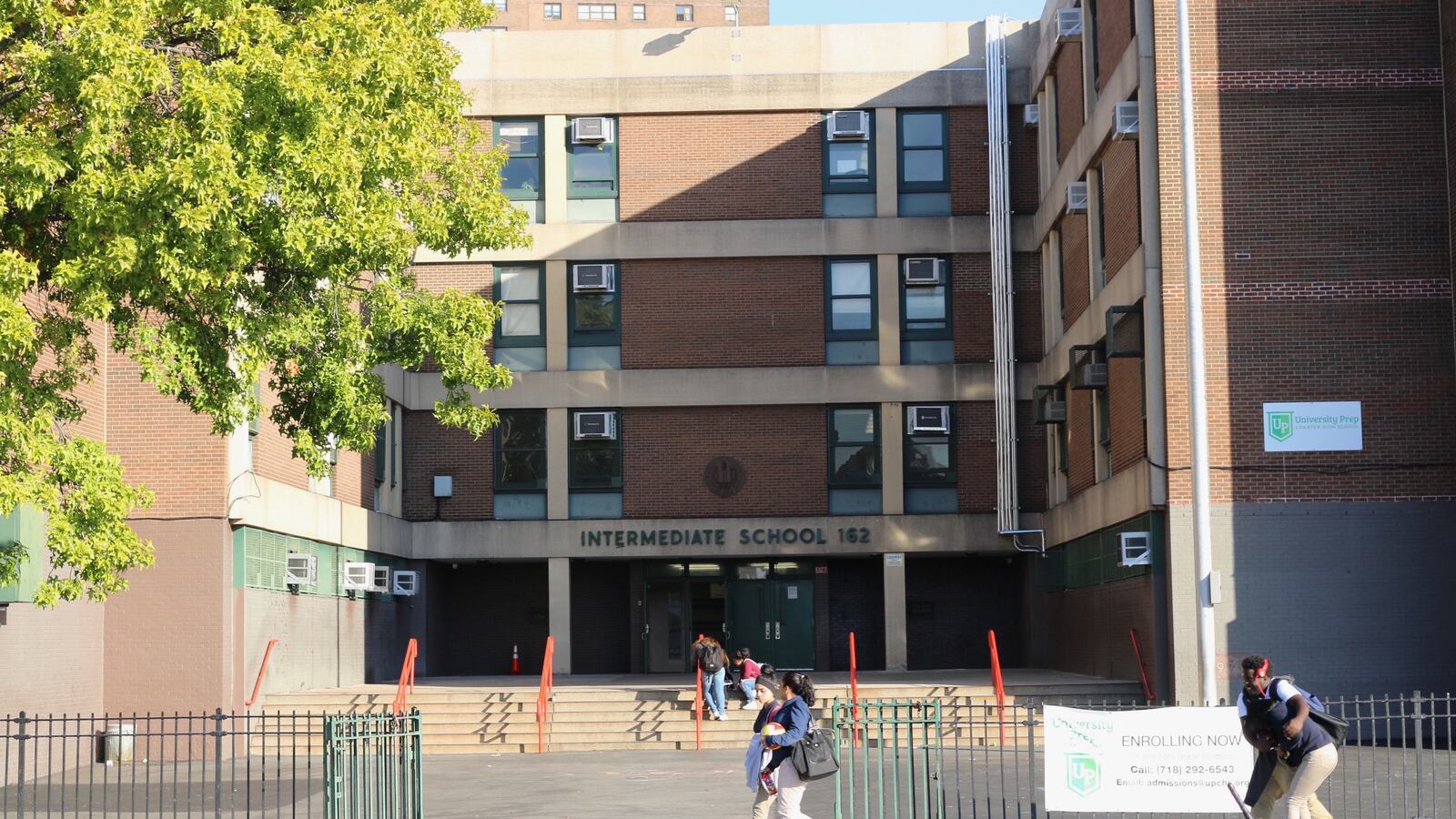Education officials will move to close or merge nine schools in the city’s “Renewal” turnaround program next year, the New York Times has reported, a program that was originally designed to spare low-performing schools from closure.
Mayor Bill de Blasio has argued that troubled schools should be nurtured back to health rather than closed, a departure from his predecessor, Michael Bloomberg, who closed over 150 schools.
The $400 million Renewal program, which originally included 94 of the city’s lowest-performing schools, was designed to turn them into “community schools” flooded with additional resources, including social services and academic support. But de Blasio also left closure on the table as a last resort.
To date, eight of them have already been closed or merged.
Now, according to the Times, the city plans to close six additional schools. Two of them are junior high schools in the Bronx: J.H.S.145 Arturo Toscanini and J.H.S 162 Lola Rodriguez de Tio, a “persistently struggling” school the city had already proposed closing as part of a deal with the state. The Times also named two high schools in the Bronx as slated for closure: Leadership Institute and Monroe Academy for Visual Arts and Design; and two Brooklyn middle schools: M.S. 584 and the Essence School.
In addition, the city reportedly plans to merge three schools: Frederick Douglass Academy IV and Automotive High School, both Brooklyn high schools; and the middle school Young Scholars Academy of the Bronx.
The merger and closure plans all must be approved by the city’s Panel for Educational Policy.
The reason for the possible closures is unclear, and raises questions about whether the three-year program — now halfway through its third year — is having the desired effect. Education department spokeswoman Devora Kaye declined to explain or confirm the Times report, writing only that, “Involving families, educators and community partners is essential to any conversation about a school’s future.”
City officials have said that they will use measures such as test scores, graduation rates, and the quality of a school’s leadership to make closure decisions.
Schools Chancellor Carmen Fariña previously indicated that schools can become too small to be sustainable. The six schools the city has reportedly identified for closure all have fewer students than when the Renewal program began in the 2014-15 school year, according to a Chalkbeat analysis. M.S. 584, for instance, has just 80 students this year, down from 224 six years ago.
Enrollment drops have plagued the vast majority of the city’s Renewal schools, which have collectively shed over 6,000 students since the program launched.
In terms of performance, all six schools are clearly struggling. At the Essence School, for instance, roughly 6 percent of sixth-graders were proficient in reading last school year, and nine percent were proficient in math — far below city averages.
But they are not necessarily the lowest-performing schools in the program, according to the city’s own benchmarks. The Essence School met one-third of the goals the city set for it last year — on measures including attendance and “rigorous instruction” — and even had one of its school climate goals converted into a “challenge target” because it was met before the deadline. City figures show 26 Renewal schools met fewer benchmarks than Essence did last year.
Families for Excellent Schools, a pro-charter group that has consistently criticized the Renewal program, seized on the news of the closures and mergers as evidence of the program’s failure.
“Thousands of kids are still languishing in Renewal schools that are even worse than those now slated for closure,” CEO Jeremiah Kittredge wrote in a statement. The organization pointed to several schools in the program that have lower test scores and graduation rates than those the city plans to close.
But multiple observers said the city’s closure plans don’t necessarily mean the program isn’t working, especially since it explicitly targeted troubled schools.
“De Blasio had run on a campaign not to close schools, but that was destined to have mixed results on a school-by-school basis,” said David Bloomfield, an education professor at Brooklyn College and the CUNY Graduate Center. “You have dozens of schools [in the Renewal program] and a relative handful have been demonstrably unsuccessful. That’s not surprising.”
Megan Hester, an organizer at the Annenberg Institute for School Reform who has closely followed the program, wondered how the city might better serve the students who would potentially be displaced by closures.
“I think for parents the question is, these schools weren’t able to be improved, so what’s the plan for the children in these neighborhoods?” she said. “What is the city learning from that and what are they going to do differently to make sure the next strategy works?”

